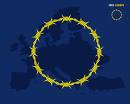European Union
Press Release – IP/08/1366
Brussels, 18 September 2008
Today the Commission adopted an “EU Drugs Action Plan for 2009-2012” (also available in French, German, Bulgarian, Czech, Danish, Greek, Estonian, Spanish, Finnish, Hungarian, Italian, Lets, Lithuanian, Maltese, Dutch, Polish, Portuguese, Slovakian, Rumanian, Swedish and Slovenian
which proposes wide-ranging measures to strengthen European cooperation
to curb the adverse consequences of drug use and cut drug-related crime.
On 21 to 23 November, ENCOD members are preparing a workshop on the participation of drug users in the design of drug policies in general and the EU Action Plan in particular. In this workshop we will also formulate a common statement on this Action Plan.
“With up to 2 million problem drug users in the EU, it’s high time to
raise awareness of vulnerable groups, especially youth, on the risks of
drug taking” stated Vice-President Jacques Barrot, Commissioner
responsible for Justice, Freedom and Security.
Latest available data show that whereas the use of heroin, cannabis and
synthetic drugs has stabilised or is declining, cocaine use is rising in
a number of Member States. The total number of people in the EU who use
drugs – or have at some time taken them – is estimated at 70 million for
cannabis, at least 12 million for cocaine, 9.5 million for ecstasy and
11 million for amphetamines, while at least half a million people are
known to be receiving substitution treatment for heroin. There are up to
2 million problem drug users in the EU and around 7,500 people die of
drug overdoses each year.
The Action Plan 2009-2012 builds on the existing approach of the EU
Drugs Strategy 2005-2012 which set out a European model for drug policy
based on a balanced approach to reduce both supply and demand for drugs.
It is based on an assessment of the expected impact that the Plan will have on the drug situation in Europe. This impact assessment is available in summary in English, French and German. Its entire version is only available in English.
The five main priorities of the new Action Plan include reducing the
demand for drugs and raising public awareness, mobilising European
citizens, reducing the supply of drugs, improving international
cooperation and facilitating a better understanding of the drug phenomenon.
Actions proposed include measures to improve the quality, availability
and coverage of treatment and harm reduction programmes for drug users
and the establishment of intelligence-led police and customs operations
to counter large-scale organised crime groups both in the EU and on the
drug trafficking routes from Afghanistan and Latin America.
The EU Drugs Action Plan 2009-2012 will be presented to the Council and
is expected to be adopted before the end of the year.
Background
What has European action on illicit drugs achieved so far?
The Action Plan 2009-2012 is based on an [evaluation of the Action Plan
2005-2008->doc852] carried out by the Commission with the support of the Member States, the European Monitoring Centre on Drugs and Drug Addiction
(EMCDDA), Europol and European NGOs.
Achievements of the past years include a decrease in the number of
drug-related deaths and in the spread of HIV through drug injecting.
Overall Member States have implemented a broad range of responses to the
drug problem, including prevention, treatment, harm reduction and
rehabilitation and taken measures to reduce crimes such as drug
trafficking and money laundering.
The evaluation confirms that, despite differences in approach, Member
States are increasingly working closer together and that national drug
policies are converging. At the international level, the EU has gained
influence by operating as one body in UN drug fora and EU drug policy
increasingly provides a model for countries worldwide.




 Creative Commons Attribution
Creative Commons Attribution